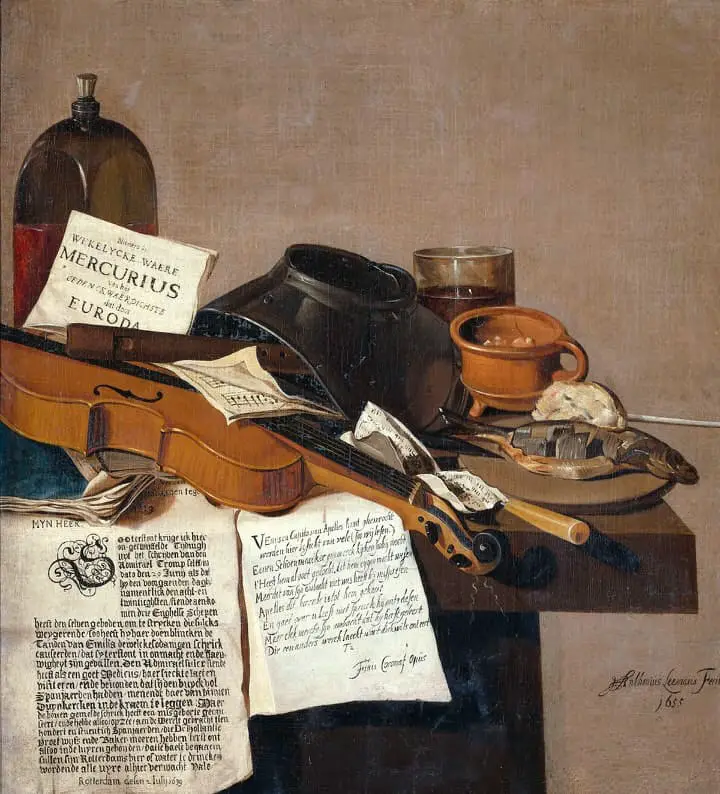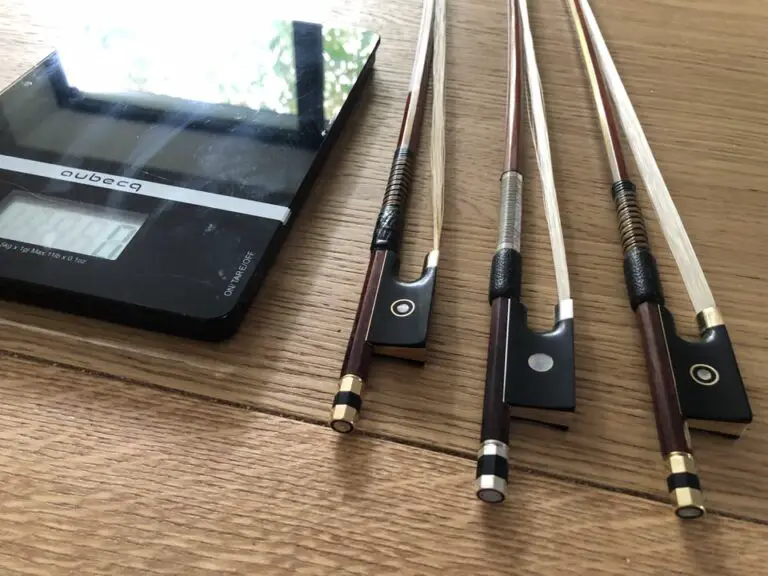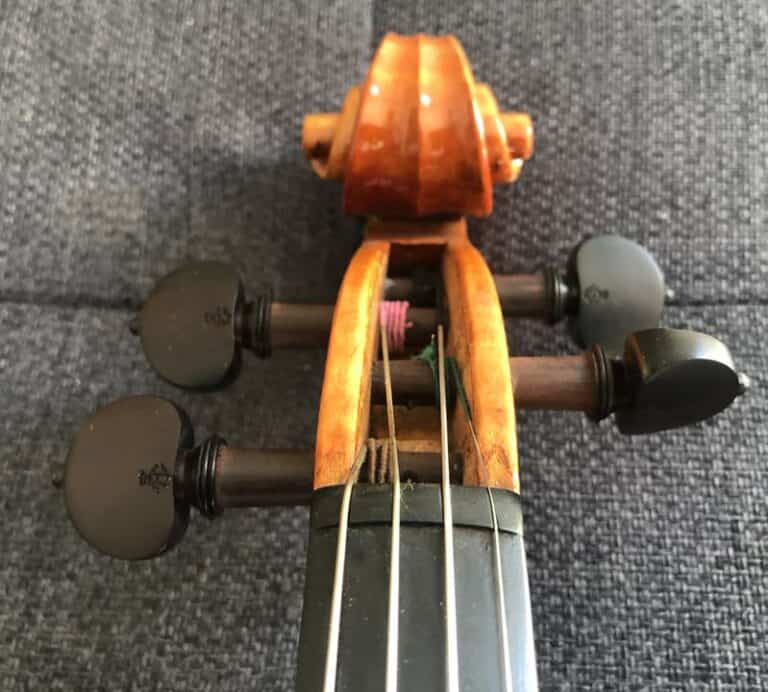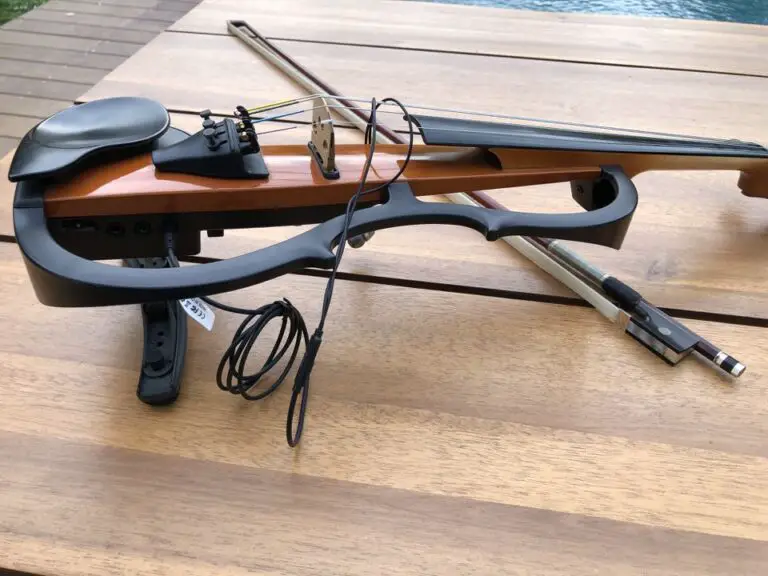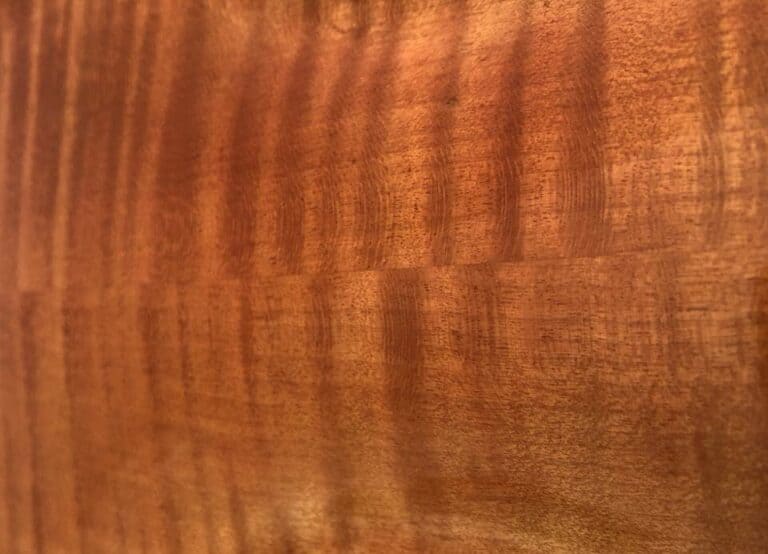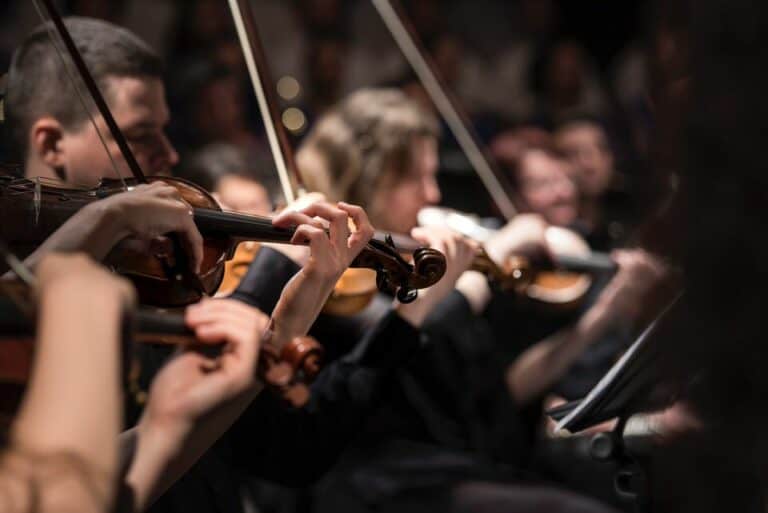How to Clean Your Violin Bow: 5 Easy Steps with Pictures
Don’t wait for your bow to be dirty before cleaning it. Cleaning your bow is part of its regular maintenance. It looks better, feels better, and, why not, plays better.
The bow hair has to be cleaned only if dirty with a microfiber cloth wet with alcohol. The stick, especially where it touches the hair, needs to be wiped with a clean cloth. I spray lightly a small amount of alcohol on it to ease the process. The rest of the bow is cleaned with a dry clean cloth. I add a bit of Hill polish to get a shiny effect. Lastly, the frog is cleaned with alcohol and polish.
What parts need to be cleaned on a string-instrument bow
Three main parts have to be cleaned on the bow because they become dirty.
- The hair: it can be dirty if down the bow close to the frog. It is usually the case if we hold the bow in the palm of our hand between playing sessions. If you hold your bow properly and are very careful not to touch the hair by any means, then it will never become dirty there,
- The stick: the stick is made of wood. Even if you tighten your bow properly as I have detailed here, it is almost impossible for the stick to never come into contact with the hair. And, as you know, the hair is full of rosin. Then, day after day, rosin builds upon one part of the stick, slowly contaminating the top part as well. It is not bad for the wood in the sense it will damage it. But as rosin is abrasive, it will slowly help to deteriorate the aspect of the bow.
- The upper part of the bow (the part that technically never comes in contact with the hair). Rosin eventually spreads here as well. Your beautiful Pernambuco bow (or carbon fiber bow for that matter) is not shiny anymore. You need to clean that part as well for aesthetics reasons as there are no real consequences on sound.
- Lastly, the frog: the frog of the bow becomes dirty because of the continuous contact with the hand. That is why you always need to play your violin with perfectly clean hands! (Young violinists, I am talking to you!) Clean hands are less oily and do not contaminate the frog with dirt, day after day, month after month. Again, this is strictly aesthetic as it does not have a consequence on sound other than psychologic. Until the dirt reaches the bottom of the hair, which we’ve discussed on the first bullet point.
Every time I suggest using a clean microfiber cloth, you can use a new makeup-removing disk and throw it away after each use.
1. How to clean the hair of the bow.
Take a clean microfiber cloth. Spray some 70° alcohol on the cloth, until you can feel the alcohol with your hand, but before it feels wet. Wipe the dirt out of the hair. You will remove rosin together with the dirt, this is perfectly normal. Some people wipe the whole hair; I usually do not do so. But you can if you want to reapply fresh rosin on the whole bow. A for me, I don’t want alcohol to dry up the natural hair and damage the scales, but I do not have any scientific proof for that. So I do the bottom of the hair thoroughly and the rest lightly.
Be careful not to put some alcohol on the stick of the bow (we will discuss that later).
Let the bow hair dry completely by leaving it untouched outside its case for the night. Be careful that nothing damages it in the meantime. To have the hair dry more easily, it needs to be spread out, out of contact with the stick: for that, I unscrew the frog and take it apart. The other advantage of doing so is you won’t impose tension on your stick the whole night.
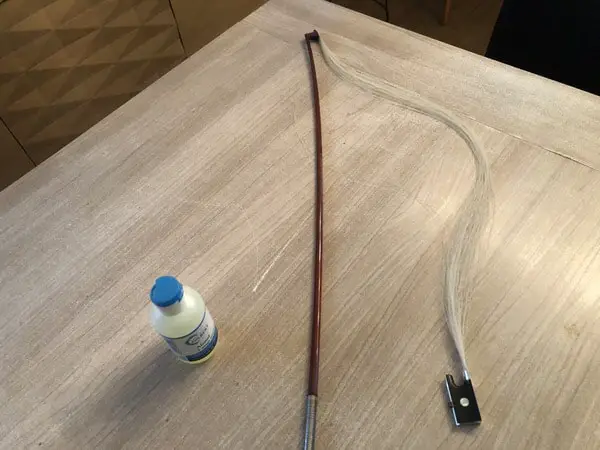
The following morning, you will find that individual hairs might be glued together: this is perfectly normal. You can separate them with a clean cloth (not with your hands!).
Then you need to reapply rosin correctly, as I have detailed in this detailed blog post.
Now you’ve got an almost new hair: no dirt close to the frog, and the old rosin powder is replaced by a fresh new one. Your sound has just become substantially better.
Do not use this cloth for anything else: it is dirty and is full of rosin. You could damage the varnish of your violin, put rosin on your strings if you ever use it again for another purpose. Just clean it in your washing machine.
2. How to clean the lower part of the bow stick
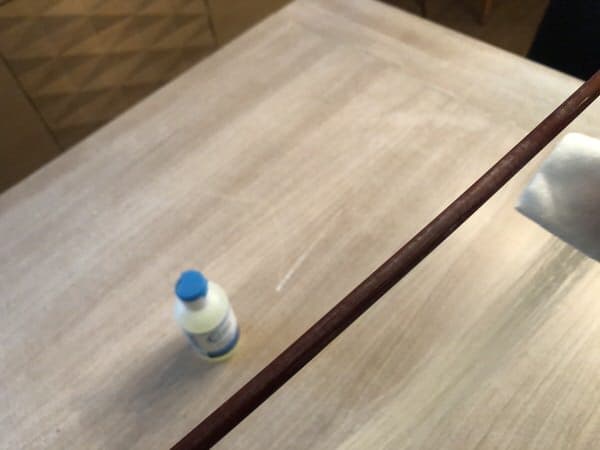
Again it is the part of the wood that becomes white with rosin powder. To clean it, you can unscrew the button and take the frog off. Or you can just tighten your bow a bit more than usual to access that part more easily.
- Take a clean microfiber cloth (not the one you have cleaned the hair with!).
- Spray some 70 °alcohol on it, once or twice. You shouldn’t even feel the alcohol on it with your fingers. Indeed, if you try to remove the rosin just by wiping it out with a dry cloth, you might just spread it and force it into the wood: it is so sticky. The alcohol will help you dilute slightly the rosin and take it off.
- Wipe the rosin off the stick. Do it without force, without forcing the rosin into the wood. Spray some alcohol once again if needed and do slight touches to remove, take off the dust. You will feel that the wood becomes slippery and shiny again quite quickly. Note on the risk of alcohol on the bow. First, I really suggest a small cloud of alcohol to the cloth, and not directly to the wood. Then, the wood of the bow is not varnished. It is raw, with some oil. So you won’t risk removing any varnish in the process. Next time you have your bow re-haired, your bow maker will put some oil on the wood to protect it.
3. Clean the upper part of the bow stick
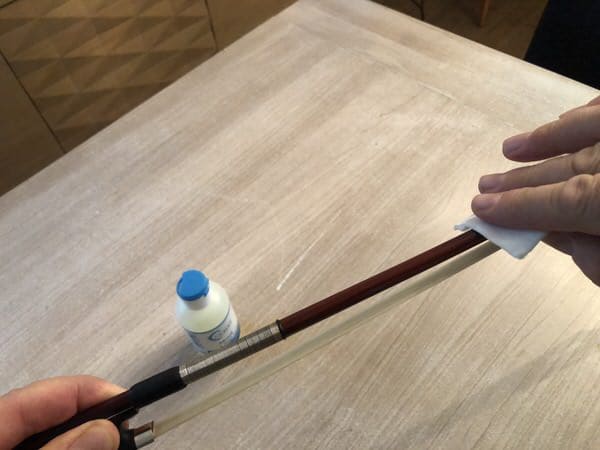
Now it is the turn of the part of the bow that does not get in contact with the hair. As we’ve seen, it gets some rosin as well eventually. To clean it, take a clean microfiber cloth. The one you’ve just used to clean the other part of the stick is too contaminated with rosin for that matter. I usually wipe slowly the stick from top to bottom.
We clean the bow in that order because we go from the most rosined part to the less rosined part. That way, we won’t put back rosin on the cleaner parts while going on in the process.
So the top part of the wood is easily cleaned. I usually add some Hill-type violin polish with a cotton swab on the wood. A real small amount. I finish off cleaning the wood with that, without any force of effort. It quickly becomes pristine and shiny. Nice!
4. How to clean your frog
Your bow won’t be clean without special attention to the frog. If you’ve read my article on how to take care of your bow, you must know how to take the frog out for maintenance. Take advantage of cleaning the bow to do the whole frog maintenance.
As my luthier and my Master have always advised me, I clean the frog doing the following:
- I put the tip of a cotton swab into alcohol and clean the frog, sides, and bottom with the cotton swab.
- Then, I wipe it with a clean microfiber cloth or with a makeup-removing disk.
- Lastly, I put a tiny bit of Hill’s original violin cleaner: I was amazed about how cheap it is now on Amazon.
- I finish by polishing the mother of pearl, ebony, and button with that product. It comes out beautiful and shiny.
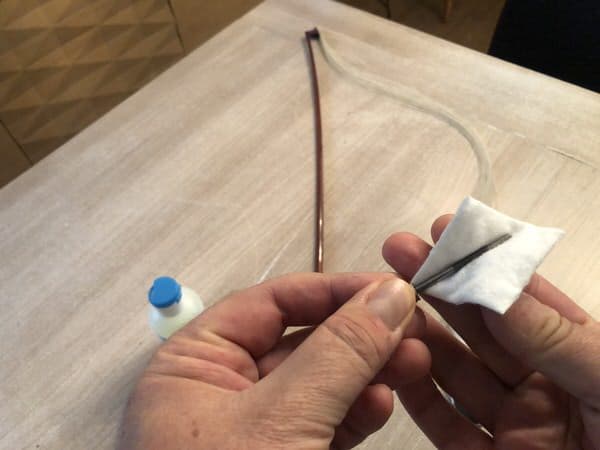
5. How often to clean your bow?
Well, I usually do it every two to three months, depending on how much I play with each of my bows. I do not want to perform that cleaning session too often though because I do not want to wear the wood and parts.
If I change bow hair every six to twelve months, my bow maker will clean the stick and the frog anyway. You won’t have to clean the hair in that case for sure, but it depends on how uncomfortable you are bringing a dirty bow to your bow maker: I can’t. I clean the frog before going to the bow maker and enjoy being complimented for it…
It feels so great to play with a clean shiny bow with clean hair with fresh rosin on it. I bet your sound will be better. I think that mine is.
Now, avoid common mistakes in bow maintenance and see my guide on violin and bow maintenance.

